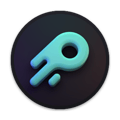Sales enablement tools come to life when presenting your interactive and non-linear content in Ingage. Use this article to begin presenting and to understand how to interact with the features that make Ingage stand apart.
Contents
Presenting on Ingage
Practicing Good Analytics Hygiene
Navigating an Ingage Presentation on iPad
Navigating an Ingage Presentation on Desktop
Identifying Interactive Components
Presenting on Ingage
To present on Ingage:
- If there is a cloud icon in the upper right corner of the content you're looking to present, click on this icon to download the presentation to your device
- Once the presentation is downloaded there are a few ways to begin presenting
- Click or tap the three dots in the lower left corner of the presentation, select Present from the menu
- On Desktop: Double click on the presentation
- On iPad: Tap once on the presentation
- When you've completed your presentation, click the X in the lower left corner to end the session
Practicing Good Analytics Hygiene
Ingage supports training initiatives and coaching opportunities with detailed analytics at the Session level.
A Session refers to all activity from when a presentation is launched to when the user returns to the Library, and includes content in other presentations accessed via Open Presentation from the first piece of content presented.
To ensure that your activity is correctly represented to your team via Analytics, please follow the below best practices:
- Connect your presentation device to the internet and open Ingage at least once a day, allowing the day's analytics to sync
- If you do not connect your device to the internet for more than 5 days, analytics will be lost for those events/sessions greater than 5 days old
- At the end of an appointment, tap the < or x button in the bottom left hand corner of the screen to return to the library: This closes the session so that the Session Report accurately details what happened during that appointment
Your Admin may activate a Session Inactivity Timer which will prompt you to confirm whether or not you have started a new appointment after leaving a presentation inactive for a period of time. To continue with the current session select Continue Presenting. To end the previous session and begin a new session select Start New Session.
Navigating an Ingage Presentation
To navigate an Ingage presentation on iPad
- Swipe to the left to progress forward in the presentation, swipe to the right to move backward in the presentation
- Tap a Section Title at the bottom of the screen to go to the first page of that Section
- Tap the Grid in the lower right corner to see All Pages in the presentation
- Use the slider in the upper right corner to adjust your view:
- Sliding to the right makes each thumbnail smaller so that you can preview more pages at once
- Sliding to the left makes each thumbnail larger so you've got a better idea of what page you're looking at
- Tap a page thumbnail to present this page
- Tap Cancel to exit the All Pages view
- Use the slider in the upper right corner to adjust your view:
- If enabled by your Admin there will be a Share icon in the lower right corner, tap this icon to share a link to this presentation via text or email
- Tap the Back button in the lower left corner to return to your Library
To navigate an Ingage presentation on Desktop:
- In the bottom right corner of the presentation are left and right facing arrows, click the right facing arrow to progress forward in the presentation and the left facing arrow to progress backward in the presentation OR use the arrows on your keyboard
- Click a Section Title at the bottom of the screen to go to the first page of that Section
- Click the Grid in the lower right corner to see All Pages in the presentation
- Click a page thumbnail to present this page
- Click Cancel to exit the All Pages view
- Click the Fullscreen icon next to the Grid in the lower right corner to take the presentation fullscreen
- Click the X in the lower left corner to return to your Library
Identifying Interactive Components
Using interactive elements can help control the flow and presentation of information during your sales conversations. Be on the lookout for the following elements to ensure that you've presented all of the content in your presentation.
Buttons:
Buttons might be rectangular, pill shaped, or something in between with a word or two to let you know what might happen when you click or tap. Examples include:



Points of Interest:
Points of Interest are small icons, occasionally on a circular field, often using a default icon or an icon that indicates what might happen when you click or tap. Examples include:



Pulse Animations:
Some clickable/tappable elements will be indicated by a pulse animation on top of a text box, photo, logo, or blank field. A pulse animation looks like a drop of water on the surface of a puddle, like this:
Scrollmotions:
A Scrollmotion is a scrubbable video with no audio. Drag the double headed arrow to the right to move the video forward, and to the left to move the video backward.
